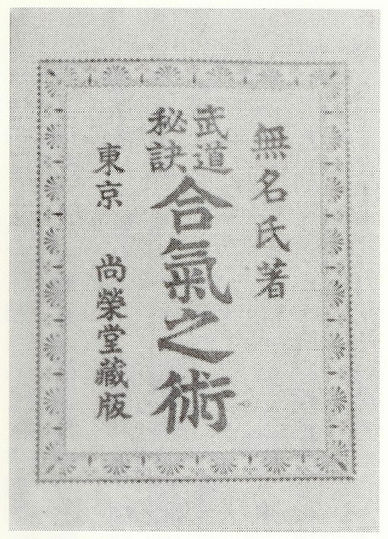
(“Secret Methods of Budo Aiki no Jutsu”)
Dude, where did the love go?
Aikido is often known as the “Art of Peace” or “The Way of Harmony”. Sometimes it is described as “The Way of Harmonizing Ki”.
“Do” of course, is “The Way”, and the word “Ki” is so common these days that it can probably stand just as it is.
Then we have “Ai” – which means neither peace nor harmony.
The character 合 is a cover fitting over a hole or an opening and actually means “combine”, “match” or “fit together” (as in a lid fitting on a container).
To be sure, there are some implications of peace and harmony – but when Japanese people speak of those things they use completely different vocabulary (although some of the compounds do include that Kanji).
That doesn’t mean that peace, love or harmony are not important to Aikido or that they weren’t important to Aikido Founder Morihei Ueshiba, they most certainly were.
And that doesn’t even mean that the translations that I gave at the beginning are incorrect, because they aren’t necessarily wrong.
What they are is interpretative – they attempt to translate the word “Aikido” in a way that represents the overall mission of the art.
However, “Aiki” as a compound with a specific technical definition existed long before Ueshiba, and it is clear from his writings well into the 1960’s that, whatever overtones the word may have acquired, he never abandoned that technical definition.
He did expand on it a little bit though, with the phrase “Take Musu Aiki”. Towards the end of his life Ueshiba often took to calling his art “Take Musu Aiki”, and would say that this was the highest form of his art. Here’s a relevant quote from Morihiro Saito:
In Iwama, O-Sensei explored Aikido by worshipping the Budo Guardian Spirits and praying every morning and evening. And so Takemusu Aikido was created. He said the former aikido was not the “true” aikido. It may not be incorrect aikido, but this is what O-Sensei said. In Takemusu Aikido, bit by bit, new techniques appear spontaneously. This never stops, it is infinite like a spring. This is Takemusu.
“Take” (武) means “Martial”, and “Musu” (産) means to “give birth” or “produce” – so it’s easy to see the reference above, in which new techniques appear spontaneously, but what does this all mean?
Let’s break it down a little bit.
If we take “Ai” as “fitting together” and “Ki” as…”Ki” then we end up with “Aiki” as something like “Fitting together with Ki”.
But what are we fitting together?
And what does “Take Musu” mean? Does it mean more than just “creativity”?
To get to these things we have to back to the Hachiriki, the “8 Powers”.
Towards the end of the last post, “Aikido and the Structure of the Universe“, I mentioned a quote from Morihei Ueshiba about the Hachiriki:
八力は、対照力「動、静、解、凝、引、弛、合、分、」「9-1、8-2、7-3、6-4」をいいます。
“The 8 powers are opposing forces: Movement – Stillness, Melting – Congealing, Pulling – Loosening, Combining – Splitting / 9-1, 8-2, 7-3, 6-4”
Some people mentioned that they aren’t really interested in numerology, but of course, it’s not numerology, it’s a technical description of In and Yo (Yin and Yang) forces. You can see that the numbers are also the same numbers that Morihei Ueshiba cited as one of the Gokui (“secrets”) of Aikido in “Kiichi Hogen and the Secret of Aikido“.
Except that it actually is numerology, sometimes – here’s a nice diagram that was posted by Josh Lerner on Aikiweb:
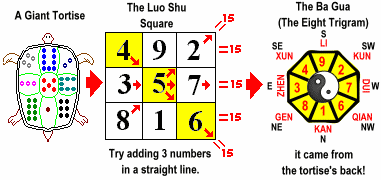
Morihei Ueshiba cited the number pairs around the outside of the magic square
According to legend, the pattern originated on the back of a magical turtle in China, who emerged from the Luo River with this pattern of dots upon his back. These numbers and patterns are the basis of Chinese divination and numerology such as the I Ching and geomancy such as Feng Shui.
So it really is numerology – except when it isn’t – it’s also an ancient training methodology for the martial arts.
The eight powers are represented in Chinese cosmology by the opposing powers of In and Yo (Yin and Yang) divided by a curving line (representing Man, giving us the Heaven-Earth-Man paradigm), and surrounded by eight trigrams representing the changing combinations of matched In and Yo forces:
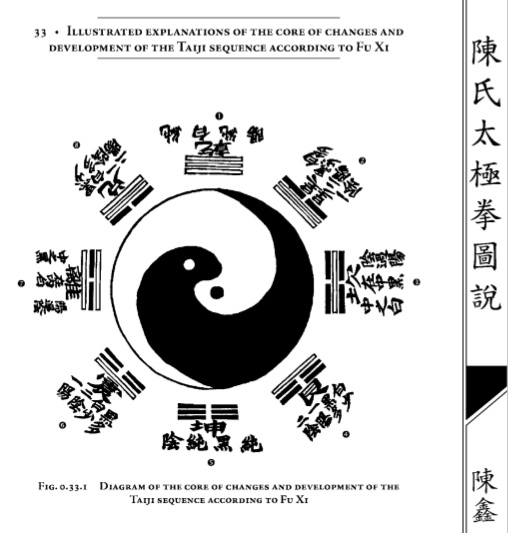
From “The Illustrated Canon of Chen Family Taijiquan” by Chen Xin
In the above diagram, you see the opposing forces of In and Yo in their progression of changes around the circle. The 8 powers are represented by 8 trigrams, showing the progression of change – In forces represented by dashed lines and Yo forces represented by solid lines.
These numbers are also used in internal martial arts such as Baguazhang, which uses the eight trigrams as its guiding principle.
And…in Aikido, according to Morihei Ueshiba – as above, the numbers represent a progression of change in the relationship between opposing forces. This is why Ueshiba cites them as one of the secrets of Aikido.
So what happens with those opposing forces? Here’s what Morihei Ueshiba had to say:
上にア下にオ声と対照で気を結び、そこに引力が発生するのである。
“Above the sound “A” and below the sound “O” – opposites connected with Ki, there Attractive Force (“Inryoku”) is created.”
With “A” and “O” Ueshiba is actually referring to the Floating Bridge – in other words, a connection betweeen Heaven and Earth. We’ll talk more about the Floating Bridge of Heaven at another time – for now suffice it to say that we’re talking about a connection between opposites, opposing powers.
As we’ve seen before, the connection between Heaven and Earth was important to Ueshiba, who said that Aikido is:
天地の理を身体に現実に描き出す道であります。
“The Way of the principles of Heaven and Earth actually written out in your body.”
Or even more classically:
合気道は天地人和合の道と理なり。
“Aikido is the Way and Principle of harmonizing Heaven, Earth and Man.”
Expressed in Chinese arts this is:
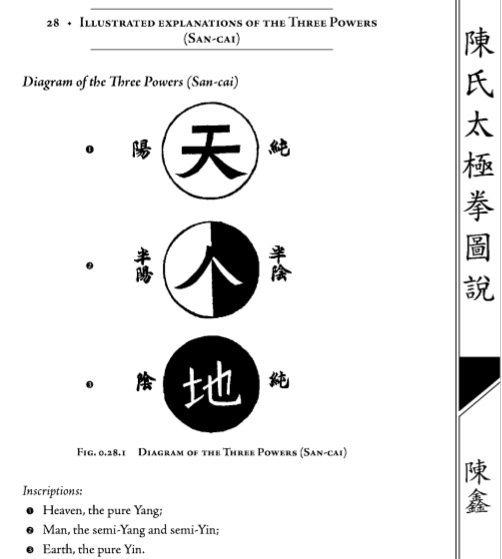
From “The Illustrated Canon of Chen Family Taijiquan” by Chen Xin
So back to “Inryoku”, or “Attractive Force”.
“Inryoku” is also the word for “gravity”, and you see it translated that way in same places. However, when you place it in the context of opposing forces it’s easy to see that “gravity” is not the correct interpretation.
So…what does “Inryoku” have to do with “Take Musu”? Here’s what the Founder said:
武産とは引力の錬磨であります。
“Take Musu is the training of Attractive Force.”
So now we’re ready for a technical translation of the term “Take Musu Aiki”:
“Fitting together opposing forces with Ki and training the attractive forces that are thereby created.”
A real mouthful – you can see why the more eloquent translations at the beginning of this article may have been adopted.
We can further clarify this definition if we look a little at “Ki”. As Morihei Ueshiba’s biographer and student Kanemoto Sunadomori said – “Intent makes Ki work”. In other words, “Ki” is driven by intent.
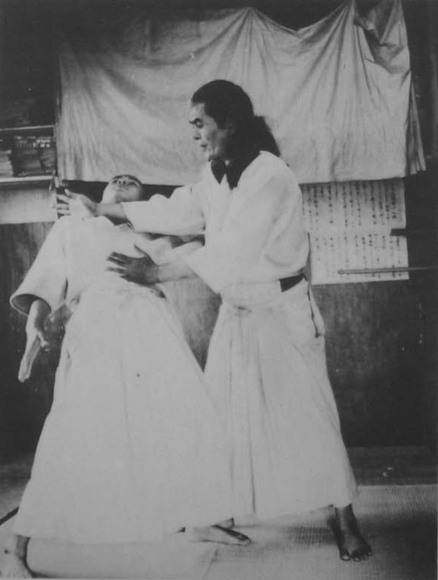
“The connection of intent and the body is the beginning of Aiki.”
– Kanemoto Sunadomari
This gives us the same basic model that forms the Chinese internal harmonies – the basis of the Chinese internal martial arts: 心と意の合、意と気の合、気と力の合 – “Heart/mind leads intent, intent leads Ki, Ki leads strength/power”.
And in fact, both Morihei Ueshiba and Kanemoto Sunadomari often used this model. So…a slightly more succinct description of Take Musu Aiki might be:
“Training to manifest In and Yo (Yin and Yang) as opposing forces through intent”
Which may be familiar to folks training the Sangenkai method.
Published by: Christopher Li – Honolulu, HI
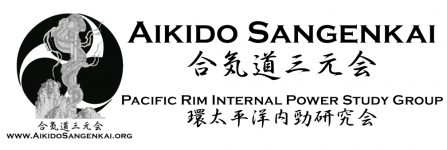
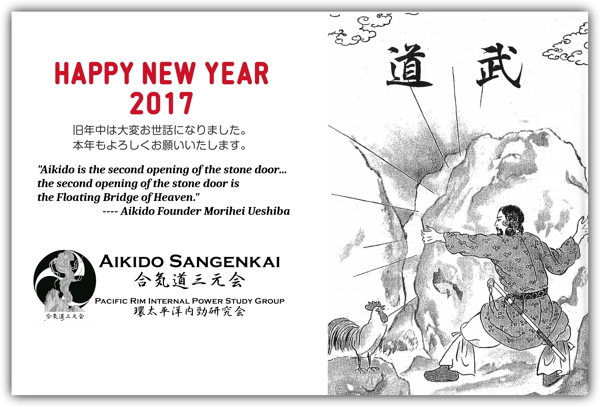
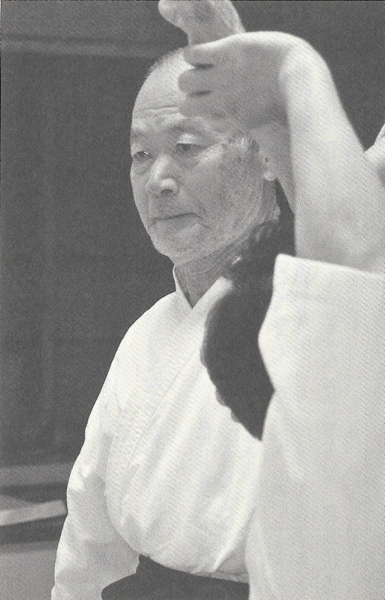
![Aikido und die schwebende Himmelsbrücke [German Version] The Gods Izanagi and Izanami on the Floating Bridge of Heaven](https://www.aikidosangenkai.org/blog/wp-content/media/utagawa-hiroshige-izanagi-izanami_2.jpg)
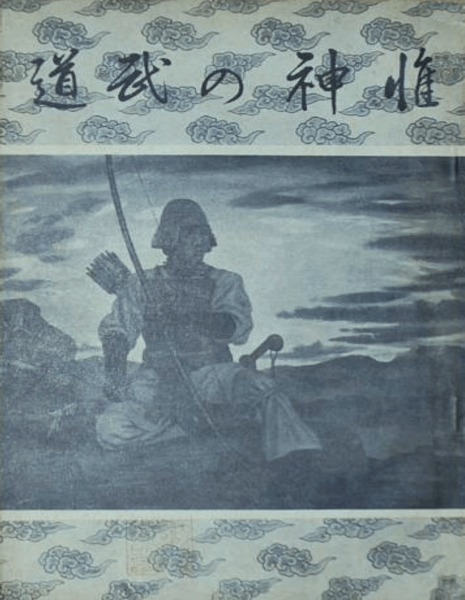
![Kiichi Hogen und das Geheimnis des Aikido [German Version] Kiichi Hogen](https://www.aikidosangenkai.org/blog/wp-content/media/kiichi-hogen_11.jpg)
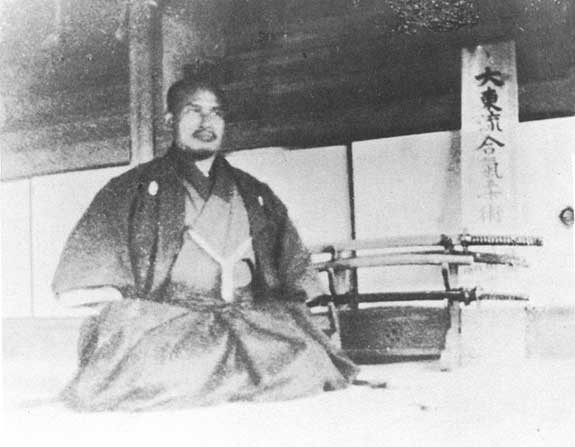
excerpt from “Interview: Gérard Blaize Sensei” by Richard Laubly, Aikido Today Magazine, #72, November/December 2000, pages 7-11.
[page 9] Could you speak to us about “developing the attractive force” in Aikido?
O-Sensei explained that, for him, the true Budo was the development of the attractive force (in Japanese, inryoku no tanren).
Hikitsuchi Sensei enabled me to experience this attractive force by completely “breathing me in.” At the time, I wasn’t aware of what he had done; I was just very surprised by what happened. I was unable to lift my hand, for example, but at the same time I couldn’t feel any force holding me. It was six or seven years later before I understood the phenomenon.
As the founder himself said, the attractive force is fundamental in Aikido. My experience with Hikitsuchi Sensei showed me that, when this phenomenon is produced, it completely changes the relationship between the people involved. The ideas of strength and will disappear. (At the same time, the ideas of space and time disappear – but I can’t really talk about that because I haven’t experienced it at that level yet.)
The experience is very extraordinary, and I have only found it in the practice of Aikido. For it to come about, you have to attract someone, breathe someone in. This requires a total absence of will and a total absence of wanting to be stronger than the other, of wanting to win.
When the experience happens, it is impossible for either person (the one carrying out the technique or the one receiving it) to act against the other. Everything stops. Even if from the outside we see one person down on the mat and the other still standing, the one is not stronger than the other. This is the experience of the attractive force.
Thanks Dan, great reference!
A good read. Thanks Christopher.
Thanks Lawrence – good to hear from you, it’s been a while!
Best,
Chris
Hi Chris:
In my opinion, based upon your translation and the context, I think you should just leave “inryoku” as “gravity”. “Jin” or “Kei” is formed by the i/yi/intent manipulating one or both of the two forces of gravity: Up from the solid ground and Down from the weight.
In other words, jin/kei (this is the basis of kokyu) is the product of gravity. So we could take the translated saying from above: “Take Musu is the training of Attractive Force” and insert gravity for “attractive force”. The result is essentially saying that “Take Musu is the training of Jin”…. and that makes perfect sense, in terms of the internal arts. A number of Chinese have said things like: “Taijiquan is really peng jin quan” … which means “Taijiquan is the use of jin”.
FWIW
Mike
Thanks for the comment Mike. “Inryoku” is a tricky term, even for Japanese native speakers. It’s often used for “gravity”, but strictly speaking “gravity” (“juryoku” / 重力, in the sense that you’re speaking about it) in Japanese is really a specific case of “inryoku”, which is a more general connective force. Of course, “jin” / 勁 doesn’t really mean “gravity” either, even though it can be used synonymously in many cases. In any case, I chose to use “connective force” here, because it better suits the context of Ueshiba’s general usage of the term (including his usage of the term in other cases), although I agree that you could easily substitute “gravity” for this particular quote – but I think that it would slightly limit the nuance that he (in my opinion) intended to use.
Best,
Chris